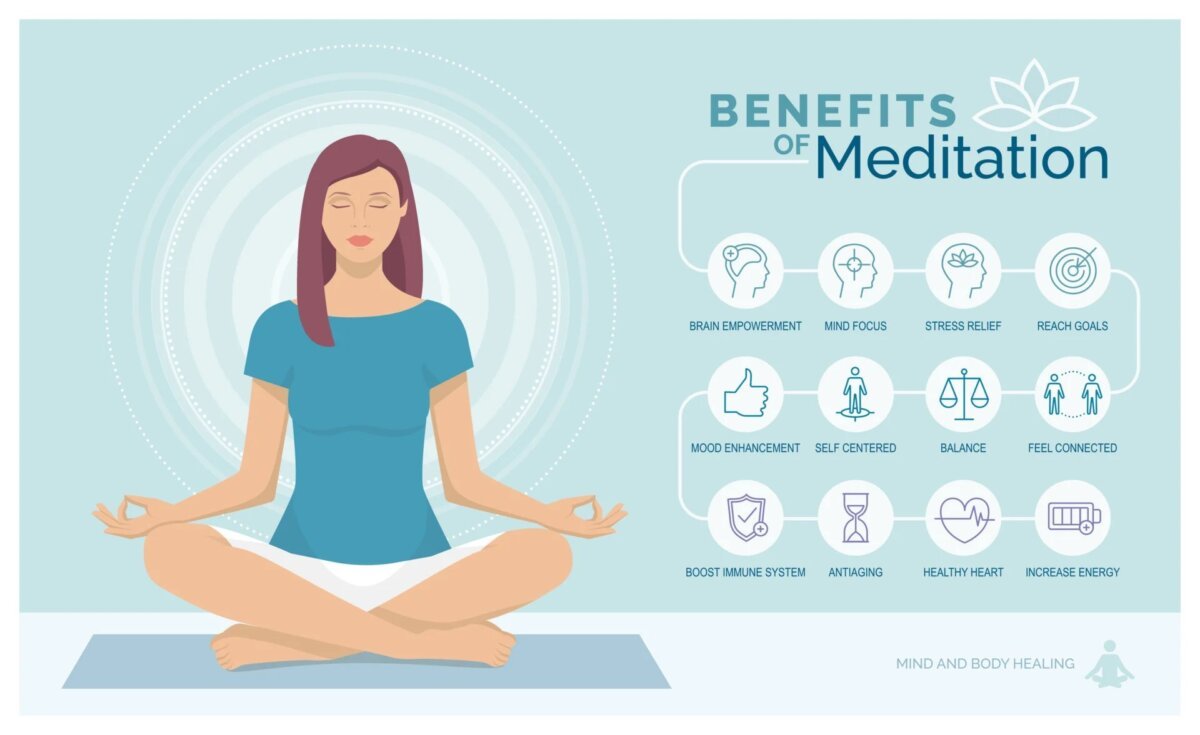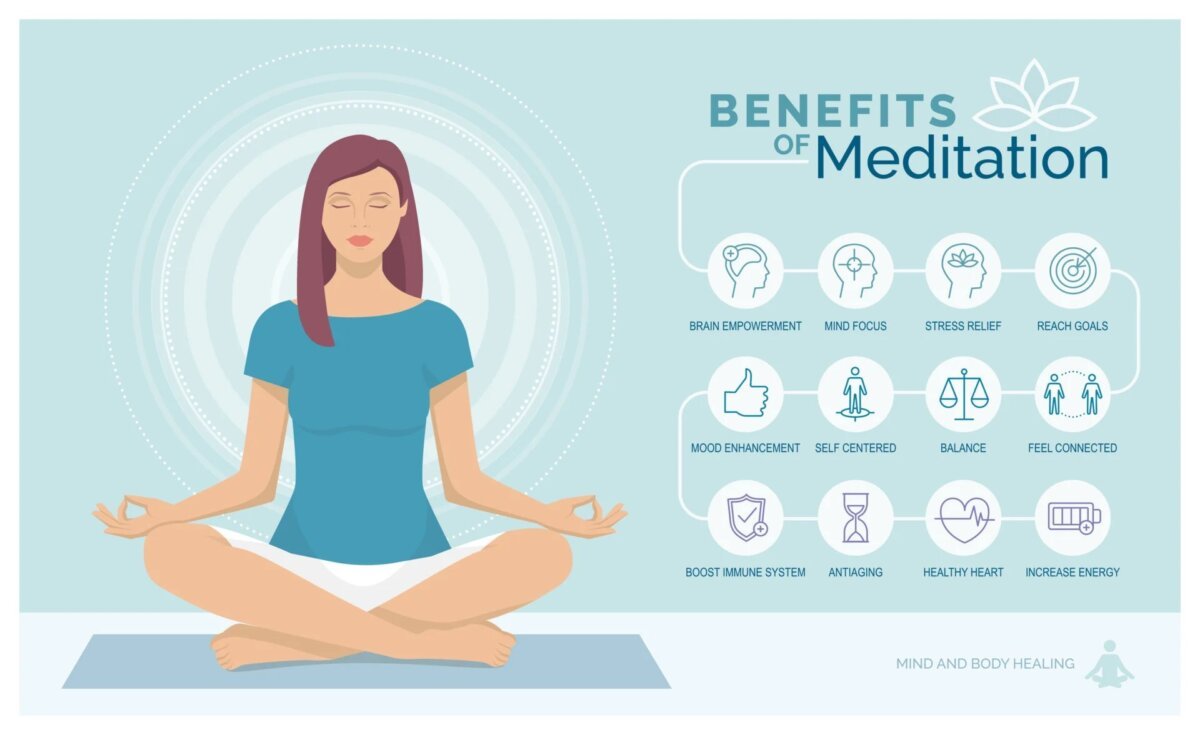Mindfulness Meditation for Pain Management: What You Should Know is an exploration of a powerful, time-tested approach to navigating the often-challenging landscape of chronic and acute pain. This method offers a unique perspective, moving beyond simply managing symptoms to fostering a deeper understanding of our relationship with pain. It delves into the core principles of mindfulness, exploring how this ancient practice, rooted in present-moment awareness, can reshape our experience of discomfort and suffering.
Understanding Mindfulness Meditation for Pain Management is crucial, as it offers a path to alleviate suffering. However, the benefits extend beyond pain relief. Consider how meditation can also boost cognitive function; specifically, it’s fascinating to learn how to leverage meditation to enhance creativity and problem-solving by exploring the resources at Using Meditation to Enhance Creativity and Problem-Solving. Ultimately, incorporating these techniques can further improve the effectiveness of Mindfulness Meditation for Pain Management.
This guide examines the scientific underpinnings of mindfulness and pain, revealing how it influences the brain’s pain pathways. We’ll explore a range of pain conditions that may benefit from mindfulness, from chronic back pain and arthritis to the sudden sting of a headache. Furthermore, it offers practical, step-by-step guidance on incorporating mindfulness into your daily life, from beginner-friendly meditation exercises to techniques for navigating painful moments with greater ease and resilience. Discover how to create a supportive environment for your practice and find resources that can support your journey.
Understanding Mindfulness Meditation for Pain Management is crucial for those seeking alternatives to traditional methods. The same principles applied here can enhance focus and productivity, as explored in detail at How Meditation Boosts Focus and Productivity at Work , ultimately aiding in pain management. By learning to center oneself, one can gain better control over pain and improve overall well-being through mindful practices.
Mindfulness Meditation for Pain Management: What You Should Know
Chronic pain significantly impacts quality of life, often leading individuals to seek various methods for relief. Mindfulness meditation has emerged as a promising approach, offering a unique way to manage pain by changing how the brain processes and responds to it. This article explores the core principles, scientific basis, practical applications, and resources related to using mindfulness meditation for pain management.
Introduction to Mindfulness Meditation for Pain Management
Mindfulness meditation involves focusing on the present moment without judgment. It’s about observing thoughts, feelings, and bodily sensations as they arise, without getting carried away by them. This practice cultivates a non-reactive awareness, allowing individuals to develop a different relationship with their experiences, including pain.
Mindfulness has ancient roots, originating in Buddhist practices over 2,500 years ago. Initially, it was a core component of spiritual training. However, it has since been adapted and secularized for broader applications, including health and wellness. Unlike other relaxation techniques that aim to reduce tension or induce a state of calm, mindfulness meditation doesn’t necessarily aim to eliminate pain. Instead, it teaches individuals to observe and accept their pain without struggling against it, which can often reduce suffering.
The Science Behind Pain and Mindfulness
The experience of pain is complex, involving both physical and emotional components. Pain signals travel through the nervous system to the brain, where they are interpreted. Mindfulness meditation can influence this process by altering brain activity and structure.
Research, including studies using fMRI (functional magnetic resonance imaging), has shown that mindfulness meditation can reduce activity in brain regions associated with pain processing, such as the amygdala (involved in emotional response to pain) and the default mode network (involved in self-referential thought). Furthermore, mindfulness can increase activity in areas associated with pain regulation, such as the prefrontal cortex. These changes can lead to a decrease in the perceived intensity and unpleasantness of pain.
Numerous studies support the effectiveness of mindfulness for pain relief. For example, research published in the *Journal of the American Medical Association* has demonstrated the benefits of mindfulness-based interventions for chronic pain conditions. Other studies have shown that mindfulness can improve the functional capacity and quality of life for individuals with chronic pain.
Types of Pain Addressed by Mindfulness Meditation
Mindfulness meditation can be applied to various pain conditions, both chronic and acute.
- Chronic Pain Conditions:
- Back pain
- Arthritis
- Fibromyalgia
- Headaches
- Irritable bowel syndrome (IBS)
- Acute Pain Situations:
- Post-surgical pain
- Pain from injuries
- Labor pain
Mindfulness can also help manage the emotional aspects of pain. Physical pain often triggers emotional responses like anxiety, fear, and depression. By cultivating a non-judgmental awareness of these emotions, mindfulness can help individuals cope more effectively, reducing overall suffering.
Getting Started with Mindfulness Meditation for Pain
Starting a mindfulness practice doesn’t require any special equipment or training. It can be done anywhere, anytime. The key is to begin with simple exercises and gradually increase the duration and intensity.
A beginner-friendly meditation exercise for pain management involves focusing on the breath and gently acknowledging any pain sensations. Start by finding a comfortable position, either sitting or lying down. Close your eyes or gently lower your gaze. Bring your attention to your breath, noticing the sensation of each inhale and exhale. When pain arises, acknowledge it without judgment. Simply observe the sensation—its location, intensity, and any associated emotions—without trying to change it. When your mind wanders, gently redirect your attention back to your breath or the pain.
A body scan meditation is another effective technique. Here are the steps:
- Find a comfortable position, lying down or sitting.
- Close your eyes or gently lower your gaze.
- Bring your attention to your toes. Notice any sensations without judgment.
- Slowly move your attention up your body, from your feet to your ankles, calves, knees, thighs, and so on.
- As you scan each part of your body, notice any sensations of pain, tension, or relaxation.
- When you encounter pain, acknowledge it without getting carried away.
- Continue scanning your entire body, and then gently return your attention to your breath.
Creating a comfortable environment is essential. Choose a quiet space where you won’t be disturbed. Ensure the room temperature is comfortable. You can also use soft lighting, a comfortable cushion or chair, and soothing music if it helps.
Techniques and Practices
Mindful breathing is a cornerstone of mindfulness meditation. Paying attention to the breath helps anchor the mind in the present moment. When experiencing pain, focus on the breath to create a sense of calm and distance from the pain. Notice the rise and fall of your abdomen or the sensation of air moving in and out of your nostrils.
Visualization techniques can also be helpful. Imagine the pain as a color, shape, or texture, and visualize it changing or dissipating. Alternatively, visualize yourself in a peaceful setting, such as a beach or forest, to create a sense of calm and detachment from the pain.
Mindful movement, such as gentle stretching or yoga, can also alleviate pain.
- Start slowly and listen to your body.
- Focus on the sensations of movement.
- Pay attention to any areas of pain or tension.
- Breathe deeply and consciously throughout the movement.
- Avoid pushing yourself too hard.
Integrating Mindfulness into Daily Life
Mindfulness is not just for formal meditation sessions. It can be integrated into everyday activities to manage pain.
You can practice mindfulness during activities like washing dishes, walking, or eating. When experiencing pain, bring your attention to the present moment. Notice the sensations of the pain without judgment. Focus on the details of what you are doing.
To cope with pain-related stress and anxiety, practice mindful breathing. Take a few deep breaths and bring your attention to the present moment. Acknowledge your emotions without judgment. Remind yourself that these feelings are temporary and that you have the ability to observe them without being overwhelmed.
Finding the Right Approach

Source: simplypsychology.org
Several resources can help you begin or deepen your mindfulness practice.
| App Name | Features | Cost | User Reviews |
|---|---|---|---|
| Headspace | Guided meditations, courses, and sleep sounds | Subscription-based | Generally positive, with high ratings for ease of use and content quality |
| Calm | Guided meditations, music, and nature sounds | Subscription-based | Well-regarded for its wide range of content and user-friendly interface |
| Insight Timer | Free meditations, guided talks, and music | Free, with optional premium features | Highly rated for its vast library of free content and community features |
Guided meditations can be helpful for beginners. They provide structure and guidance. Self-guided practice allows for greater flexibility and personalization. Experiment with both approaches to find what works best.
It’s important to find a qualified mindfulness teacher or therapist if you need support. They can provide personalized guidance and support, especially if you’re dealing with complex pain conditions.
Common Challenges and How to Overcome Them, Mindfulness Meditation for Pain Management: What You Should Know
Several challenges can arise when starting mindfulness meditation for pain.
Distractions are common. When your mind wanders, gently redirect your attention back to your breath or the pain. Avoid judging yourself. Consistency is key. Start with short meditation sessions and gradually increase the duration. Schedule your practice into your daily routine.
Additional Resources and Support
Several resources offer more information on mindfulness and pain management.
- Books: *Full Catastrophe Living* by Jon Kabat-Zinn; *Mind Over Mood* by Dennis Greenberger and Christine A. Padesky.
- Websites: The Mindfulness Project; Mindful.org.
Combining mindfulness with other pain management strategies, such as medication or physical therapy, can be beneficial. Consult with your healthcare provider to develop a comprehensive treatment plan.
Case Studies and Real-Life Examples
Many individuals have found relief from pain through mindfulness.
A daily mindfulness routine might include a 10-minute body scan meditation in the morning, a 5-minute mindful breathing exercise during the day, and a 15-minute guided meditation in the evening.
“I have been living with chronic back pain for years. Through mindfulness meditation, I have learned to accept the pain without struggling against it. This has significantly reduced my suffering and improved my quality of life.”
